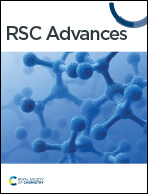Enhancing enzymatic digestibility of bamboo residues using a combined low severity steam explosion and green liquor-sulfite pretreatment
Abstract
In this study, the effect of the green liquor (GL)-sulfite pretreatment on bamboo for enzymatic hydrolysis was investigated. The performance characterization of the pretreated bamboo substrates, including the chemical composition, and the structural characteristics was carried out. The results showed that 91.3% of lignin removal was achieved when the sample was treated with a GL loading of 12.0 mL per g-DS at 120 °C for 1 h. After 120 h hydrolysis with 18 FPU per g-cellulose for cellulase and 27 CBU per g-cellulose for glucosidase, the glucose yield increased from 54.6% to 89.6%. The SE-treated bamboo could bind more easily to cellulase than GL-sulfite treated bamboo could. The structural changes on the surface of the samples were characterized by SEM. The results indicated that the surface lignin could be effectively removed during pretreatment, thereby decreasing the enzyme-lignin binding activity.



 Please wait while we load your content...
Please wait while we load your content...